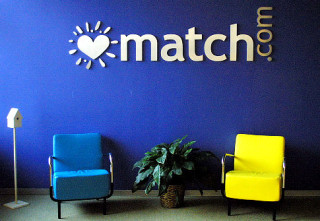
SocialNet.com, which started in 1997 with all the makings of a successful dating site, learned about network externalities the hard way. It received $19 million from three rounds of investments. It hired a top-notch management team and put a respected advertising agency to work with a $6 million budget. CEO Liz Kalodner created her own profile on the site, receiving coverage in a wide variety of media outlets. Things looked very good. But in early 2001, SocialNet.com was sold to MatchNet at a very low price, and the SocialNet.com site was folded into other sites, the victim of daters like me who snubbed it for larger sites. Nobody Goes There Because Nobody Goes There Nobody was going to SocialNet because nobody was going to SocialNet. This statement is a simple way of capturing the concept of a network externality—a market where demand creates demand. The concept of demand is crucial in economics, and the basic idea of demand for a product is pretty straightforward. Demand goes up when a product is thought to be better because it has more features, has higher quality, or is simply more cool and hip. Demand is also typically higher when the price is lower—all else being equal, online daters will prefer a free site to one that charges a fee to join. Those two factors are the key drivers of demand for most products. Products with a network externality, however, require consideration of a third feature: what are other people doing? A product has a network externality if one added user makes the product more valuable to other users. Online dating sites obviously work this way because nobody wants to be the only person on a dating site. When you stop and think about it, it’s amazing any dating site ever gets started. Who signs up first? Who would join a dating site that had twenty people? Basically, an online dating site cannot succeed simply by having the features one might want, such as a great algorithm for matching people, an innovative and intuitive interface, and an interesting array of information about potential date .If there aren’t a lot of people to choose from, none of that other stuff matters.
The Facebook Effect The rise of the internet has made network externalities more apparent and more important in many ways. Network externalities are not a new thing, but internet platforms have arisen in various applications that have made the “demand creates demand” idea especially salient. Perhaps the best example of this idea is Facebook. Essentially, the only reason anyone uses Facebook is because other people use Facebook. Each person who signs up for Facebook makes Facebook a little more valuable for everybody else. That is the entire secret of Facebook’s success—it has a lot of subscribers. That sounds like a remarkably easy business model, but of course the trick is to get the critical mass to begin with. How did the dating sites that have become large and successful get to the point where new subscribers sought them out simply because they had so many existing subscribers? In the case of Match.com, a number of things fell into place. It formed in 1993, just as the internet was becoming a significant force. It went live soon afterward, originally for free. Because it was one of the first and had a well-designed site, it signed up a few users. Then Match.com simply sat back and used its first-mover advantage because, when it had even one hundred users in a given area and other sites did not have any, it was an easy decision for a prospective dater to sign up with Match.com.
(Reprinted by permission of Harvard Business Review Press. Excerpted from Everything I Ever Needed to Know About Economics I Learned from Online Dating. Copyright 2014 Paul Oyer. All rights reserved.)


































